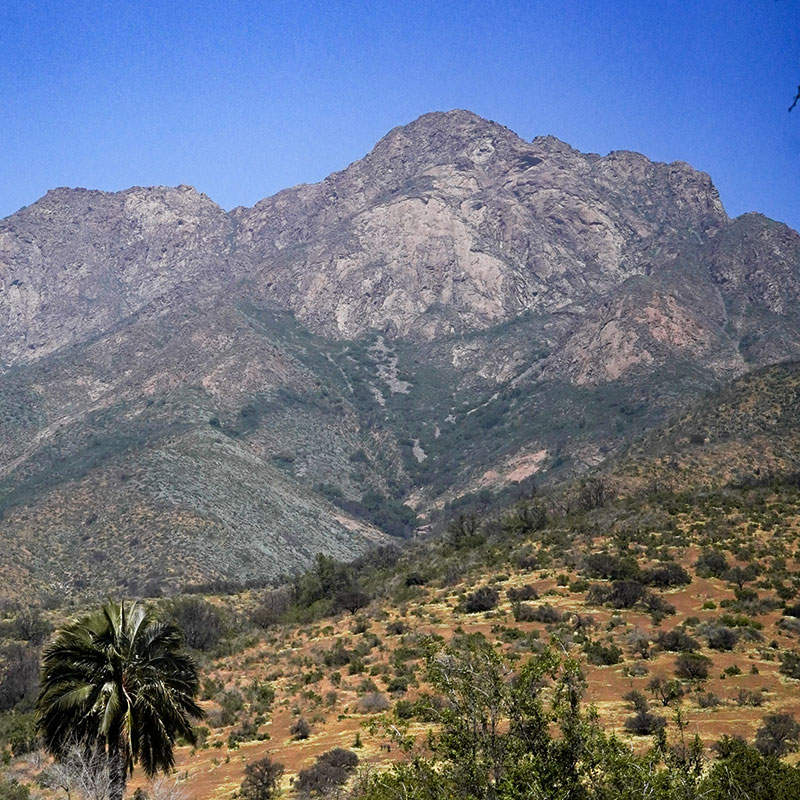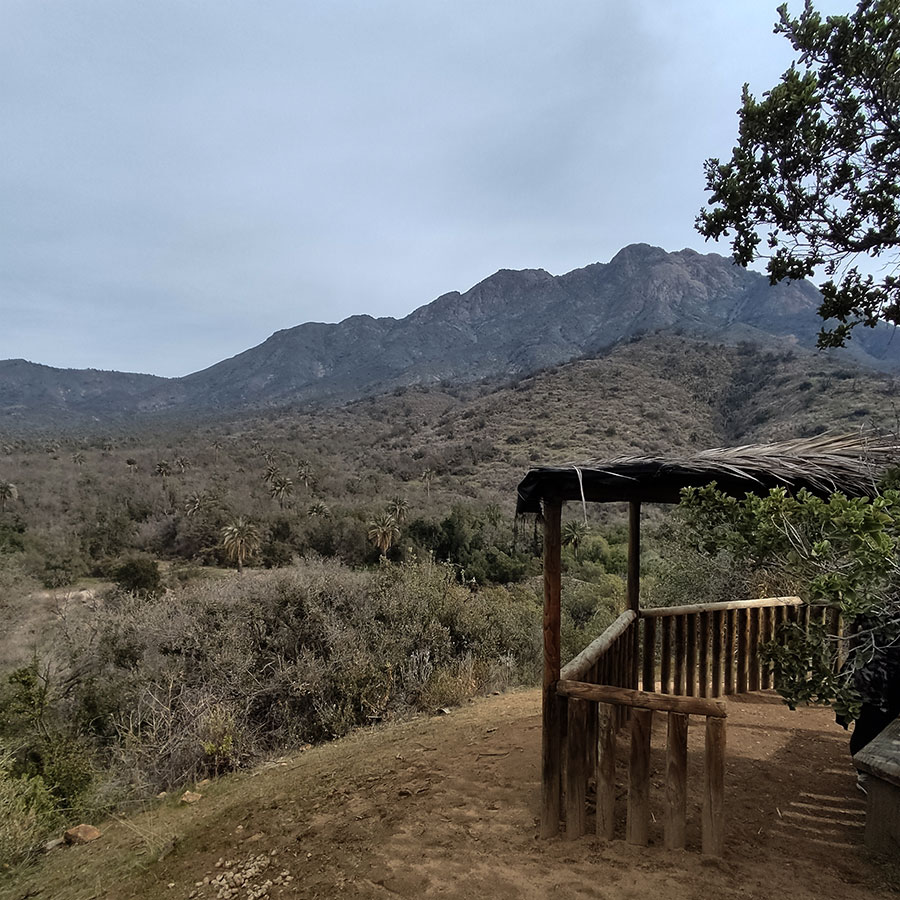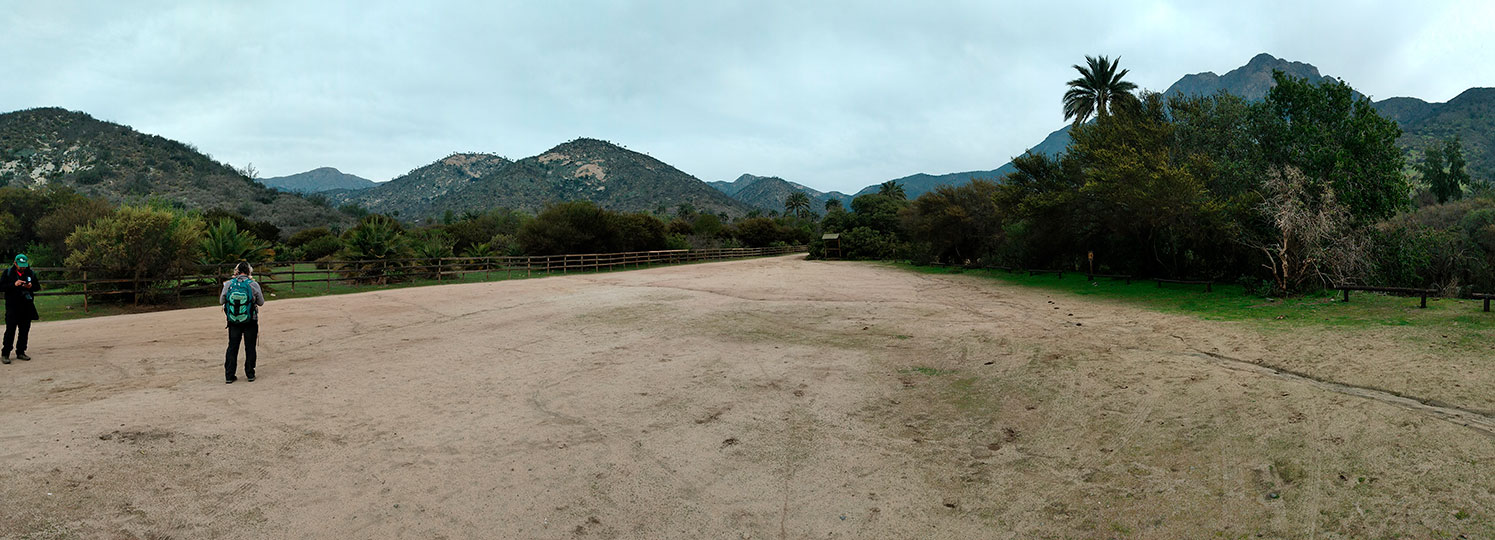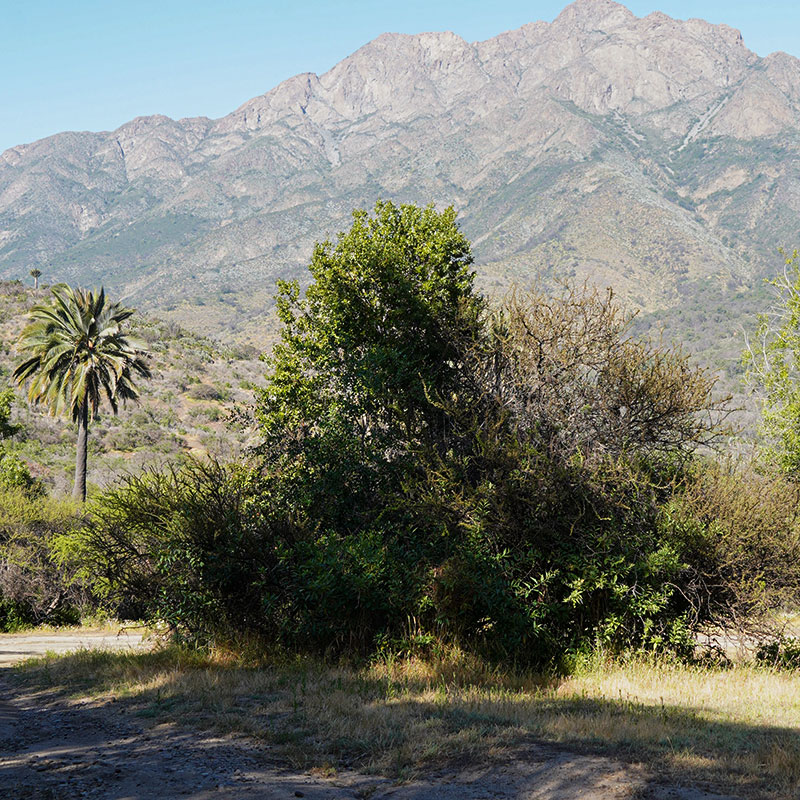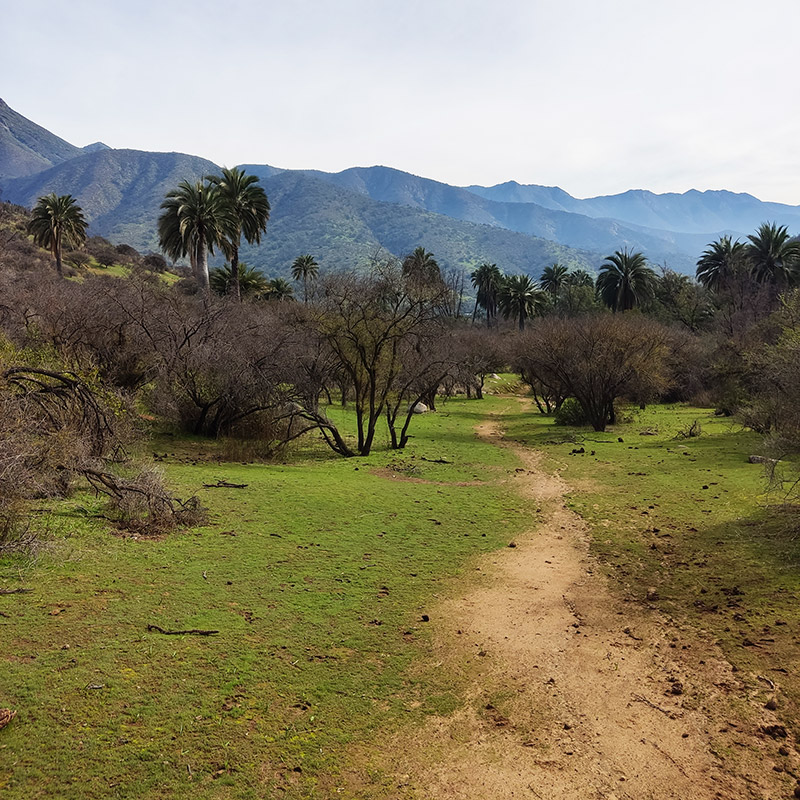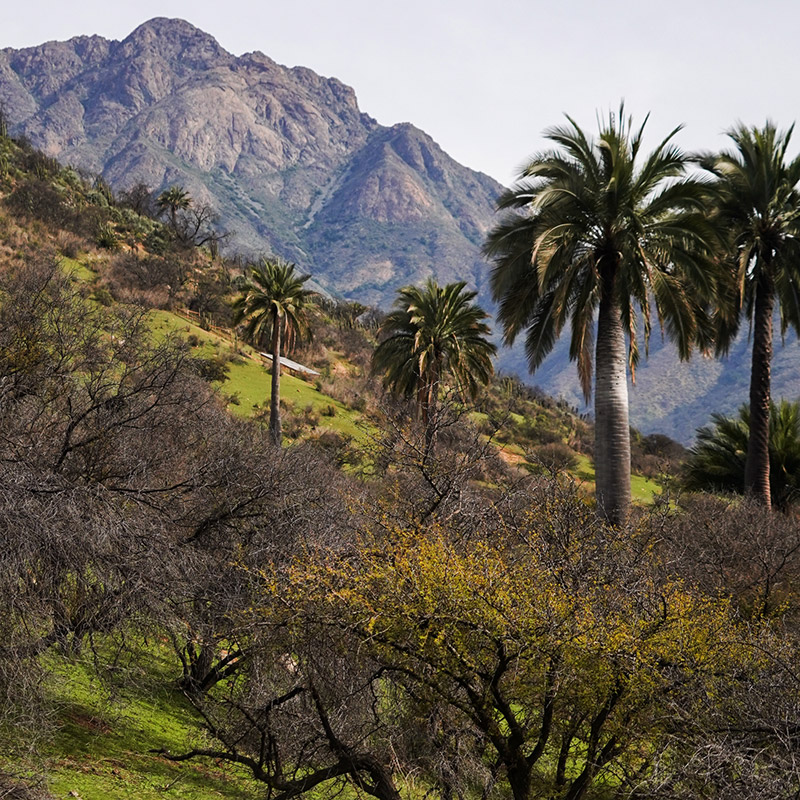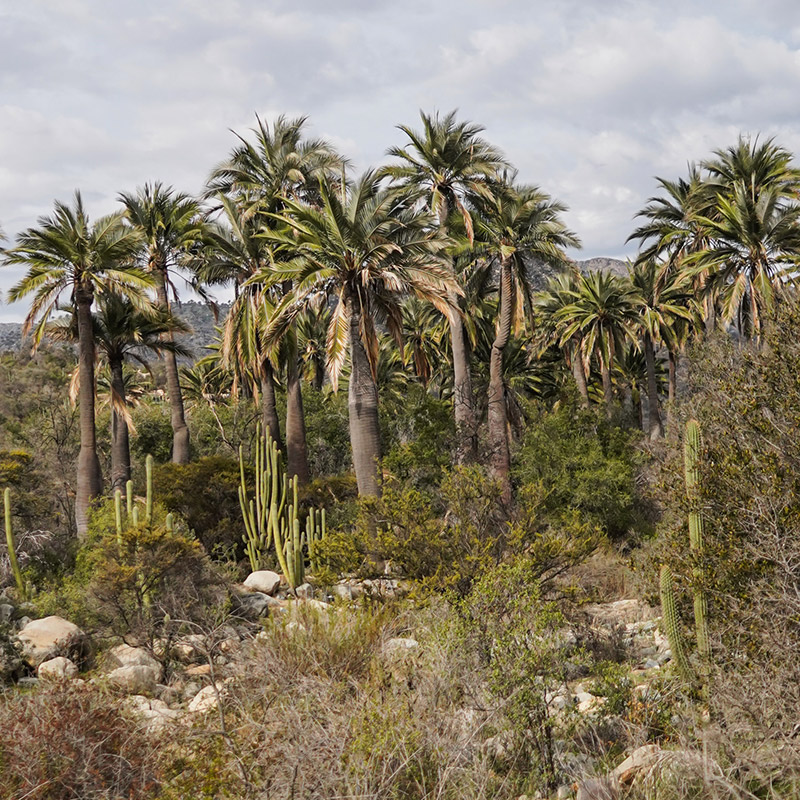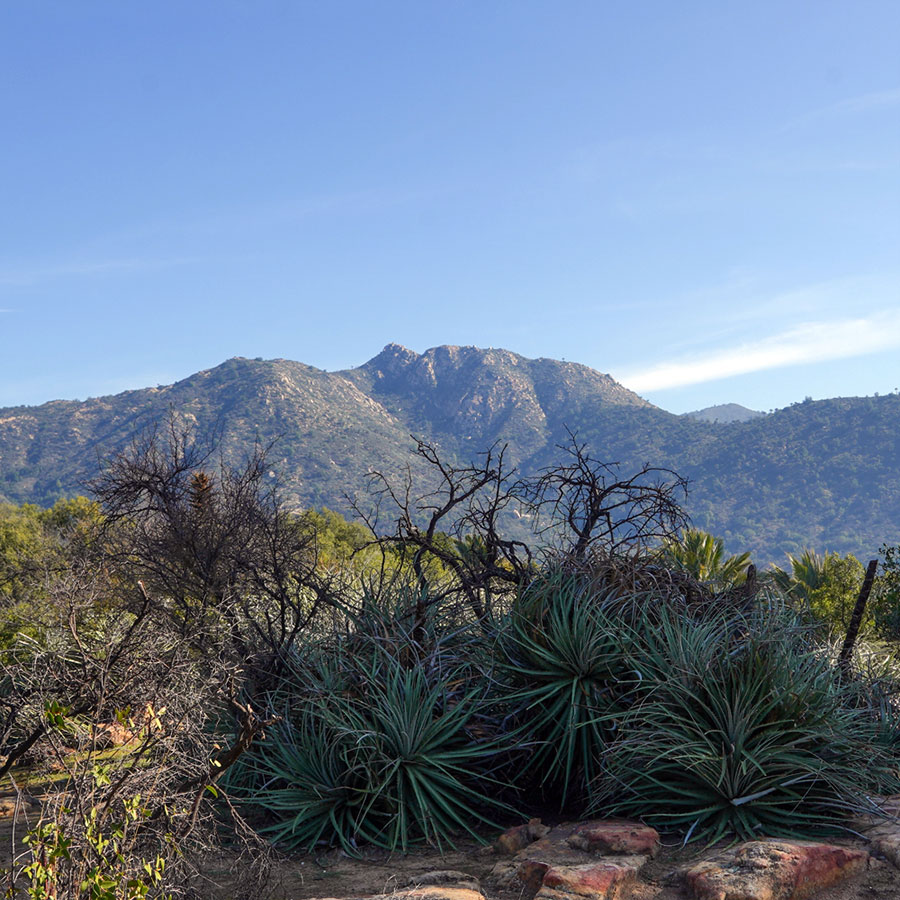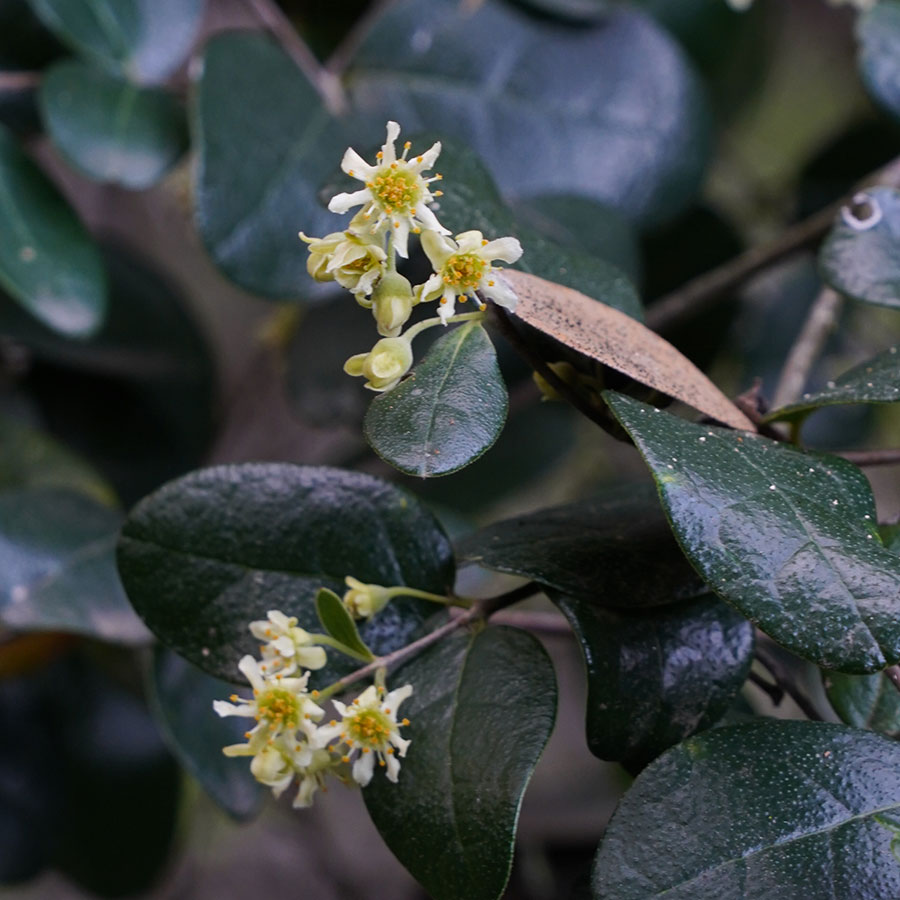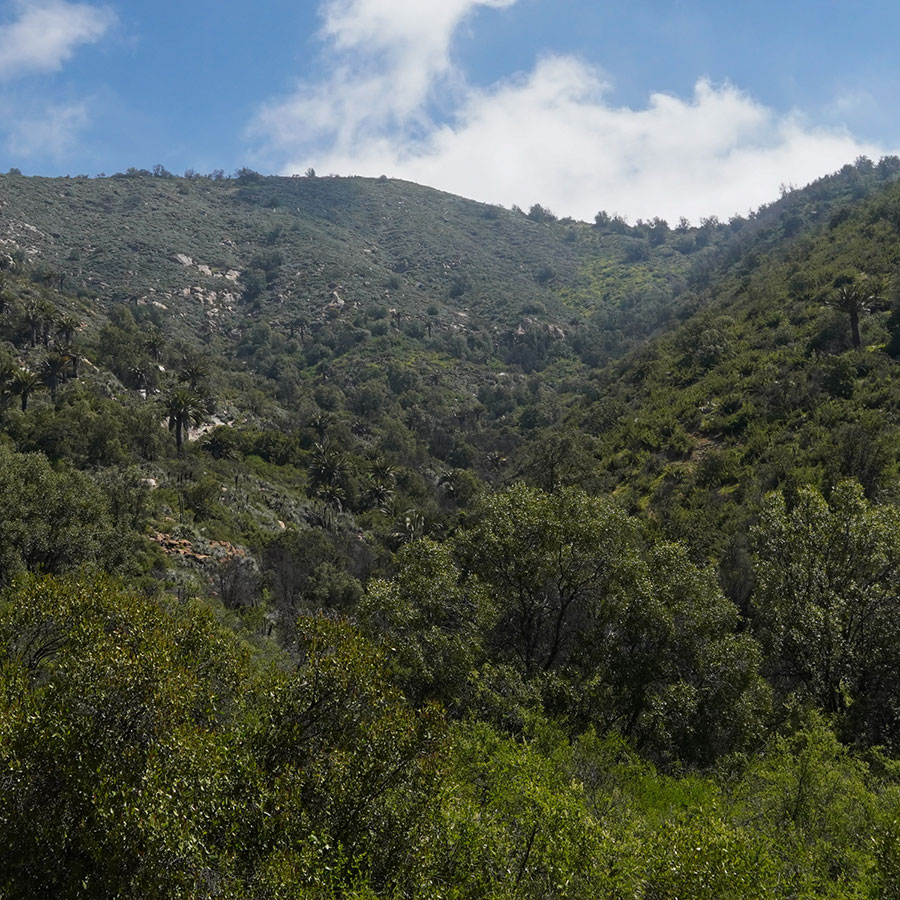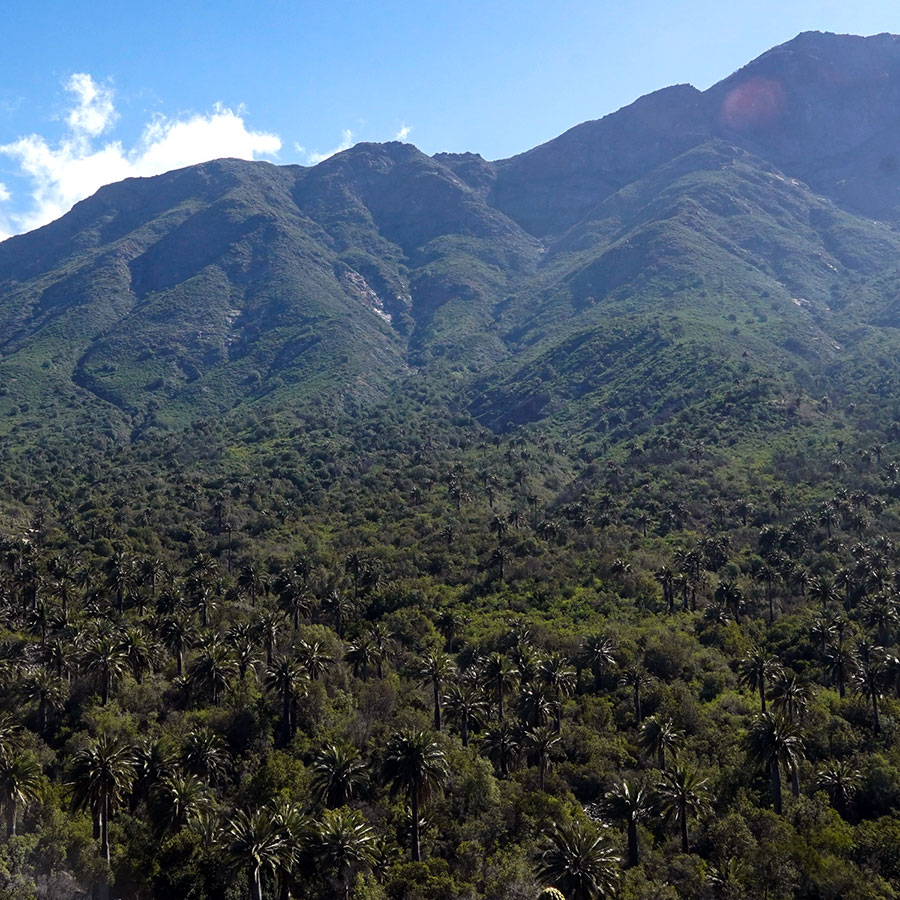Viewpoint to the Amasijo
El Palmar Circuit - Item N°11
La Campana National Park is located in the Coastal Mountain Range, immediately south of the Aconcagua River, whose transverse valley is the last of its kind, before the formation of the central valley and the intermediate depression to the south. It has a total surface area of 8,000 hectares and is divided into three sectors: Ocoa, with 5,440 hectares; Granizo, with 972 hectares; and Cajón Grande, with 1,588 hectares.
The creation of the National Park considered the protection of two species in particular, the Chilean palm (Jubaea chilensis), an endemic species of central Chile, in a vulnerable state, and the Santiago oak (Nothofagus macrocarpa), also endemic to Chile.
We are in the Ocoa sector looking towards the core area of the park, where the largest number of Chilean palms are concentrated. Behind the ridgeline are the sectors of Granizo and Cajón Grande where the oak forests lie and end. This is a sector of transition from a semi-arid to a Mediterranean climate, where the northern limit of the entire Chilean Nothofagacae family is traced.
An enthusiastic Francesco Di Castri referred to the National Park and the very particular characteristics of the National Park:
"It constitutes a true biogeographic and ecological recapitulation, in such a small space, of almost all the ecosystems found throughout Chile. Xerophytic scrub on the northern slopes, like those of the Norte Chico up to Paposo; oak (Nothofagus), canelo, peumo, boldo and palm forests in the ravines and southern slopes; small steppes on the summit of Cerro El Roble, similar to those of the Norte Grande and Patagonia. And what about the extreme richness of its biodiversity? Species of Paleo-Antarctic, Valdivian, Neotropical and Andean origin, all intermingled, until they constitute the most original biological mosaic".


